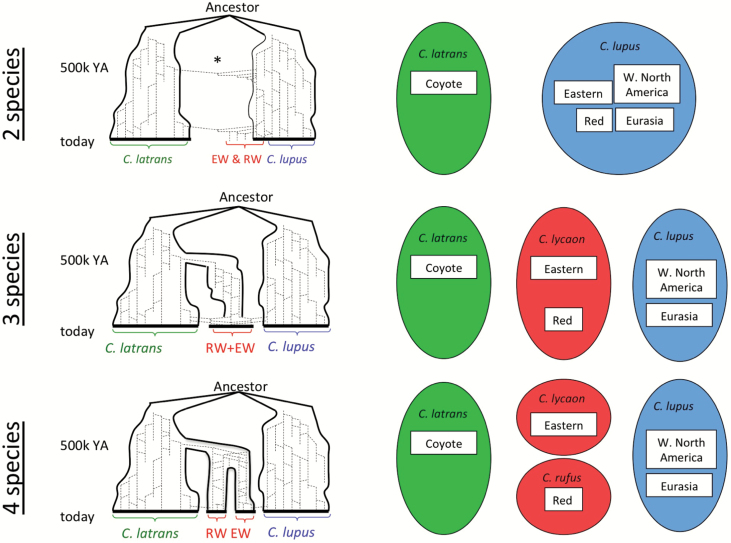Figure 4.
Schematic evolutionary history (left) and resulting taxonomy (right) for 3 hypotheses for the origins of the red wolf (RW) and eastern wolf (EW). The evolutionary history diagrams show a timing of a coyote-wolf split around 1 MYA and subsequent speciation within North America around 500k YA, although as noted in the main text those dates are debatable. Under the 2-species hypothesis, the original RW and EW were forms of C. lupus that hybridized with coyotes when wolves were extirpated from most of their native range in eastern North America. This hypothesis also allows for the possibility of ancient hybridization between gray wolves and coyotes. The 3-species hypothesis recognizes RW and EW as a single species that diverged from the coyote lineage; C. lycaon is the older scientific name and so would have priority over C. rufus under this hypothesis. According to the 4-species hypothesis, EW and RW both evolved from the coyote lineage but diverged into separate species in the northeast and southeast.

